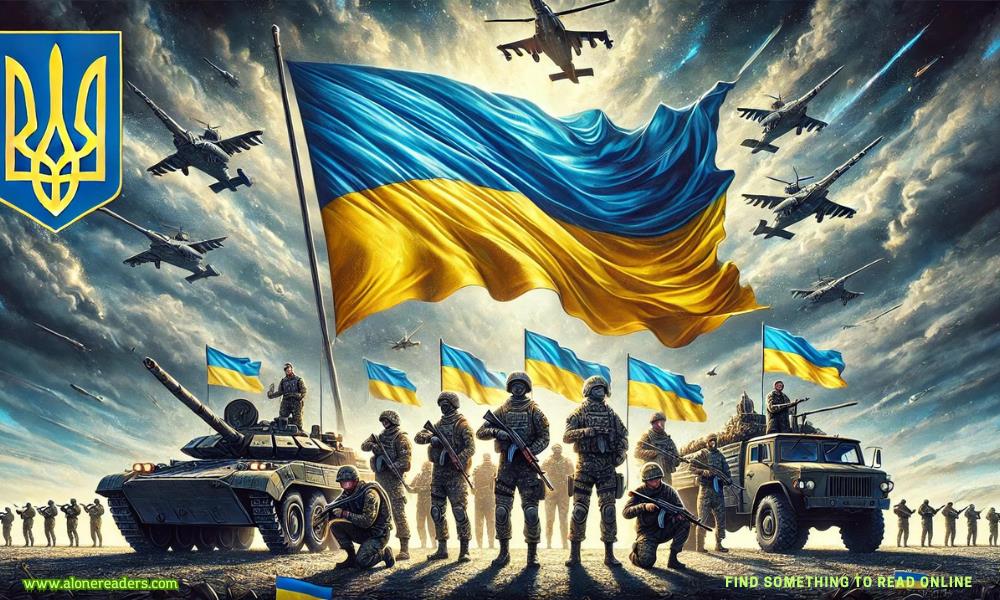
Ukraine has intensified its military operations in the eastern Donbas region, a hotbed of fighting since Russia’s invasion began. The region has been a critical front in the ongoing war between Ukraine and Russia, and recent developments highlight Ukraine’s renewed push to regain control of areas held by Russian-backed forces. The counteroffensive has garnered global attention as Ukraine attempts to turn the tide in the conflict, particularly in strategically vital locations across Donetsk and Luhansk provinces.
The Donbas region, comprising the Donetsk and Luhansk provinces, has long been a focal point in the Ukraine-Russia conflict. Rich in resources and of strategic importance due to its industrial base, the area has been contested since 2014 when Russian-backed separatists declared independence from Ukraine, leading to a de facto occupation. Donbas has witnessed some of the most intense fighting, with both sides viewing control of the region as pivotal in the broader conflict.
Ukraine’s latest counteroffensive is seen as part of its larger military strategy to reclaim occupied territories and thwart Russia’s long-term ambitions in eastern Ukraine. Control over Donbas is not only vital for Ukraine's territorial integrity but also critical to the future geopolitical dynamics between Kyiv and Moscow.
The recent Ukrainian counteroffensive involves a multi-pronged approach targeting several key areas in the Donbas. Ukrainian forces have launched coordinated attacks aimed at Russian-occupied positions, employing artillery, armored units, and airstrikes to weaken Russian defenses. Military analysts believe Ukraine's goal is to exploit weaknesses in the Russian military's overstretched supply lines, gaining a strategic upper hand in the region.
Over the past few months, Ukraine’s forces have made incremental gains, reclaiming small but significant portions of territory, including villages and key roadways essential for resupplying troops. These advances have not come without a cost, however, as heavy fighting continues along the frontlines, with casualties mounting on both sides.
In response to Ukraine's counteroffensive, Russian forces have dug in, reinforcing their positions and launching counterattacks. Moscow continues to deploy additional troops and military hardware to the region in an attempt to stem the Ukrainian advance. The Kremlin has also intensified its use of drone and missile strikes targeting Ukrainian military positions and logistics hubs.
Russian state media has portrayed Ukraine’s counteroffensive as futile, emphasizing the defensive strength of its forces in Donbas. However, Ukraine’s advances—though limited—suggest that the counteroffensive is gradually gaining momentum. Ukraine has also received substantial international military support, particularly from NATO allies, who have provided advanced weaponry and intelligence, bolstering Kyiv’s ability to mount effective operations.
Western support has played a crucial role in Ukraine’s ability to sustain its military operations. The counteroffensive has been bolstered by the delivery of long-range artillery systems, drones, and precision-guided missiles from the U.S., the U.K., and other European allies. These supplies have enabled Ukrainian forces to strike deep into Russian-occupied areas, targeting supply depots, command centers, and troop concentrations.
Diplomatic efforts to secure further aid packages are ongoing, with Ukraine urging Western countries to speed up the delivery of essential military equipment. Analysts note that Ukraine's counteroffensive success hinges on sustained international support, as well as Kyiv’s ability to maintain its logistical supply lines.
As fighting intensifies, the impact on civilians in Donbas continues to grow. Many towns and villages in the region have been subjected to constant shelling, displacing thousands of people and leaving critical infrastructure in ruins. Humanitarian organizations have raised concerns about the growing number of displaced families, shortages of food and medical supplies, and the destruction of schools, hospitals, and homes.
The United Nations and other humanitarian groups are working to provide relief to civilians caught in the conflict, but the situation remains dire. Many residents in Donbas have had limited access to basic necessities for months, and the ongoing fighting has made it difficult for aid organizations to reach those in need.
The international community has closely monitored the developments in Donbas, with many countries expressing concern about the potential for escalation. NATO Secretary-General Jens Stoltenberg has reaffirmed the alliance’s support for Ukraine, stating that NATO remains committed to helping Ukraine defend itself against Russian aggression.
Meanwhile, Russia’s actions in Donbas continue to draw widespread condemnation. The European Union has imposed multiple rounds of sanctions on Moscow, targeting key sectors of the Russian economy, including energy and defense. These sanctions, along with military aid to Ukraine, are seen as part of the broader strategy to pressure Russia to cease its hostilities.
China, a key player on the global stage, has called for restraint on both sides, while offering itself as a mediator. However, Ukraine and many of its allies remain skeptical of Beijing’s ability to serve as an impartial arbitrator, given its close ties to Moscow.
While Ukraine’s counteroffensive in Donbas has shown progress, experts caution that the fight for control of the region is far from over. Russia’s entrenched positions and ability to deploy additional resources make it unlikely that Ukraine will achieve a swift or decisive victory. Instead, the conflict in Donbas is expected to drag on for months, if not longer, with both sides engaged in a grueling battle of attrition.
Ukraine’s success will depend on a combination of military strategy, continued international support, and its ability to sustain momentum on the battlefield. For Russia, maintaining control over Donbas is critical to its broader objectives in Ukraine. The Kremlin has framed the war as essential to Russia’s national security and has shown little interest in backing down.
Conclusion
The situation in Donbas remains fluid, with Ukraine’s counteroffensive making slow but steady gains. As the conflict grinds on, both Ukraine and Russia are locked in a bitter struggle that shows no signs of abating. The international community continues to call for a peaceful resolution, but for now, the fate of Donbas hangs in the balance as Ukrainian forces press forward in their bid to reclaim territory and end the Russian occupation.